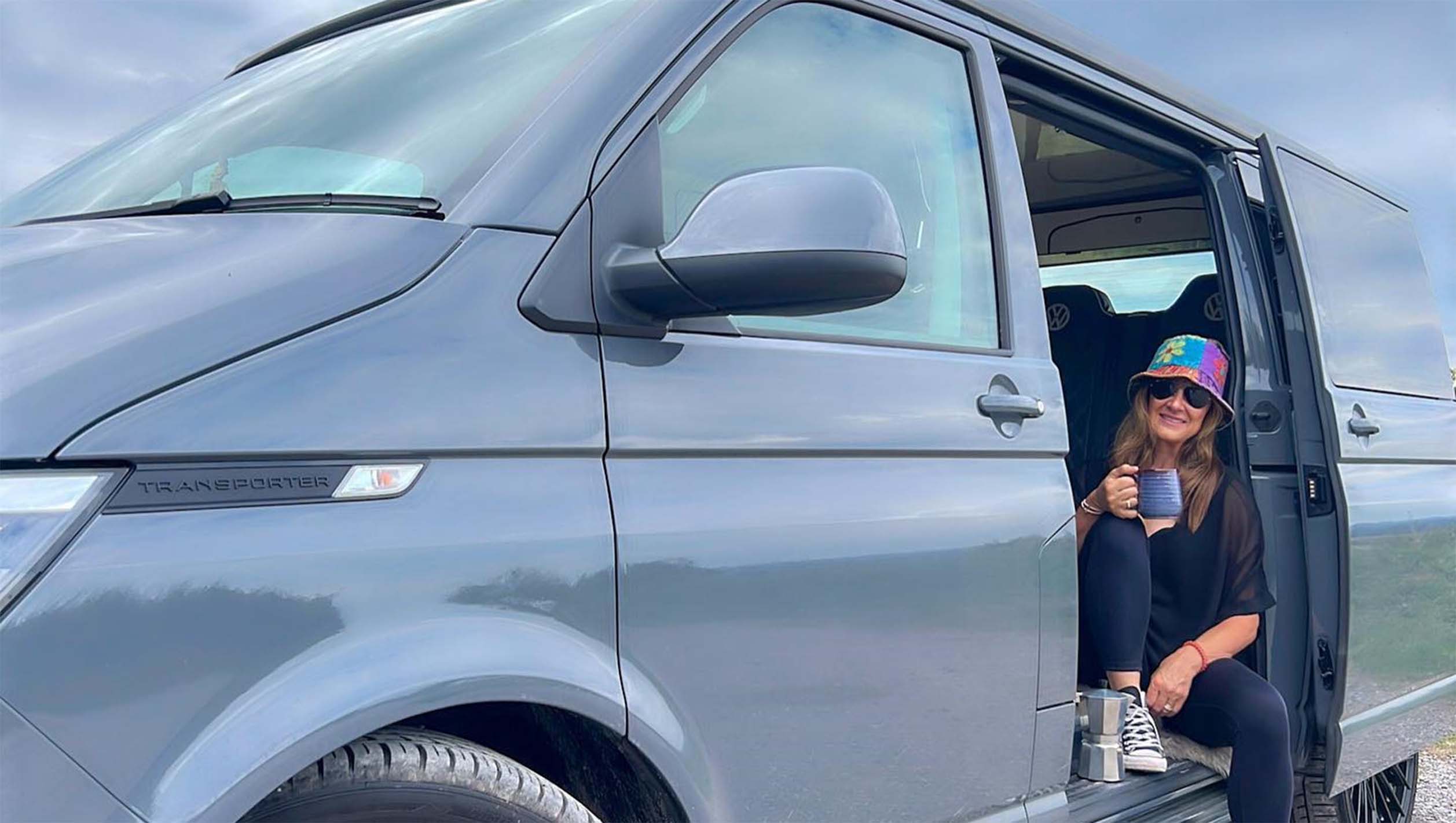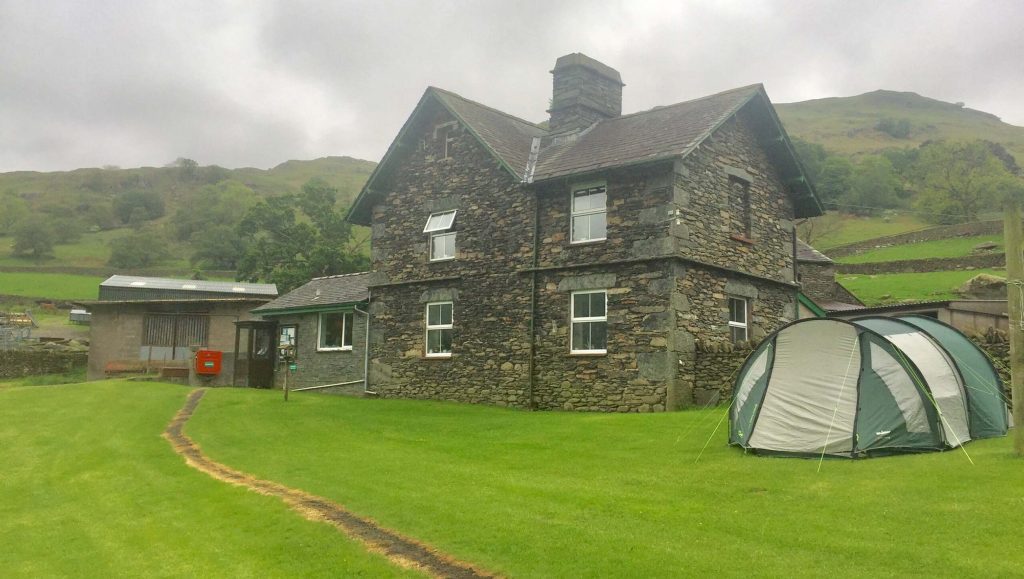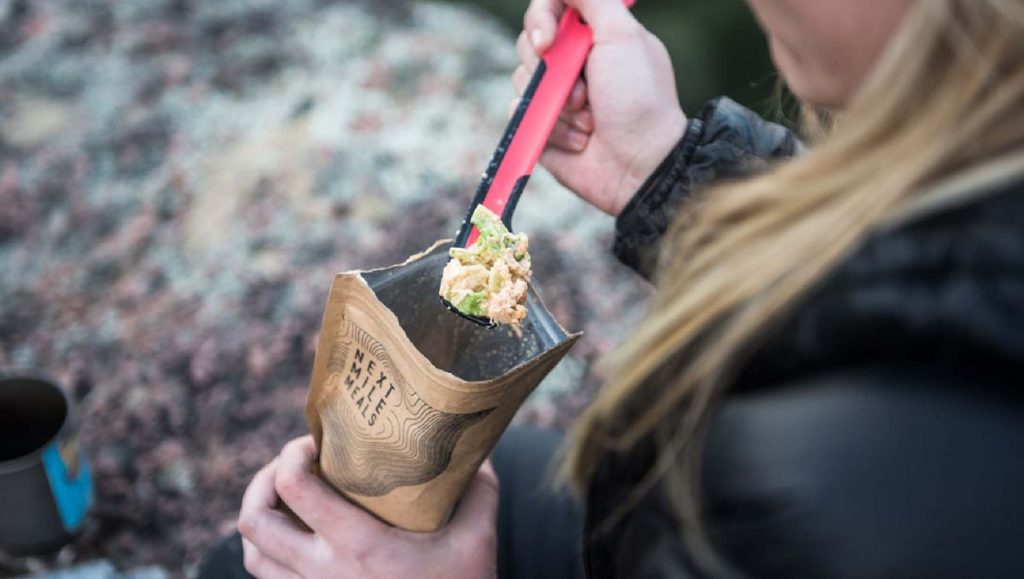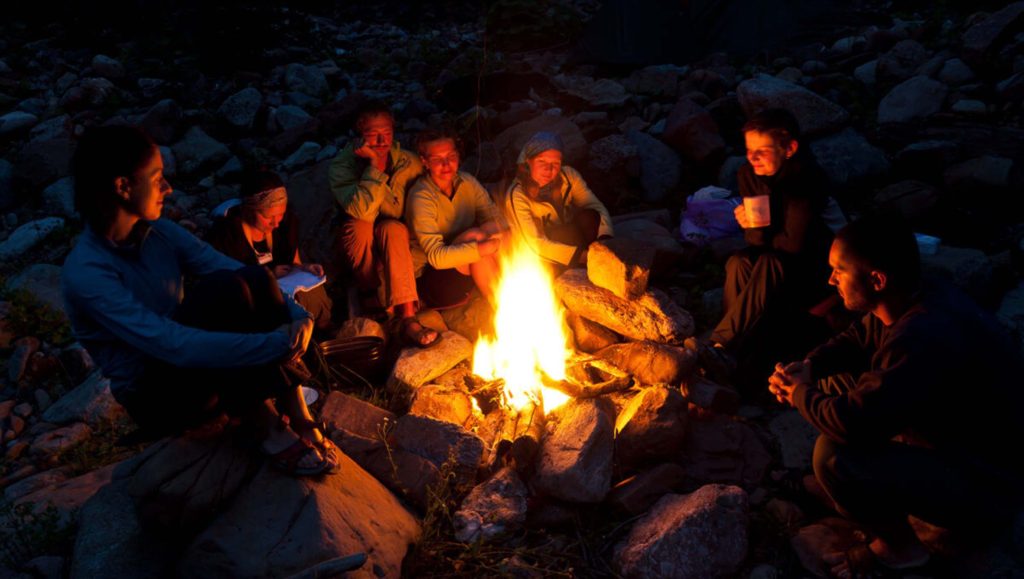
Table of Contents
- Choosing the Right Campsite
- Setting Up Camp: The Tent and Essentials
- What to Pack: Food and Gear
- Battling the Elements: Weather Considerations
- Safety First: Tips for a Secure Camping Experience
Our recent three-day escapade to Helvellyn in October was an unforgettable experience. We immersed ourselves in the awe-inspiring beauty of the Lake District while camping beneath the stars. We aim to share valuable insights and tips from our camping adventure, focusing on the key factors that ensure both safety and comfort when camping in Helvellyn. Our journey was not just about the destination; it was about the entire experience of camping in this rugged and stunning landscape.
Choosing the Right Campsite
Selecting the ideal campsite is the crucial first step toward a successful and enjoyable camping adventure. In the Lake District, you’ll find numerous options, each with its unique charm and advantages.

Glenridding Campsite: Our Chosen Oasis
Located in the heart of Glenridding and a stone’s throw from the picturesque Ullswater, Glenridding Campsite provided the perfect backdrop for our Helvellyn adventure. Here’s a closer look at why we chose this campsite and what it has to offer:
- Location: Glenridding, Lake District
- Camping Fee: £25 per night
- Opening Hours: Open year-round
Advantages of Glenridding Campsite:
- Proximity to Ullswater: The campsite offers direct access to the stunning Ullswater, allowing for serene morning strolls along the lakeshore. Watching the sunrise over the water was a magical way to start our days.
- Facilities: Modern amenities, including clean showers and toilets, enhanced the camping experience. After a long day of hiking, the hot showers were a welcome luxury.
- Convenience: Glenridding village is a short walk away, providing easy access to pubs, restaurants, and shops for any last-minute needs. We enjoyed a delicious meal at a local pub and picked up some extra snacks for our hikes.
- Trail Access: The campsite serves as an excellent starting point for various hiking trails, including the route to Helvellyn. We could hit the trails right from our campsite without needing to drive anywhere.
Our Advice: When selecting a campsite, prioritize factors like proximity to water sources (for drinking and washing), accessibility to hiking trails, and proximity to a nearby town or village for supplies and dining options.
Setting Up Camp: The Tent and Essentials
Your campsite setup is crucial for comfort and safety. Here are some detailed tips based on our camping experience:
Choosing the Right Tent

- Opt for a durable and weather-resistant tent suitable for the season. Helvellyn’s weather can be unpredictable, so ensure your tent can handle rain and wind. We used a three-season tent with a rainfly to keep us dry during occasional rain showers.
- Practice setting up your tent before your trip to familiarize yourself with its assembly. This will save you time and frustration at the campsite.
- Ensure your tent provides enough space for both sleeping and storage. We found that having a vestibule for storing our backpacks and gear outside the tent helped keep the interior organized and spacious.
Tent Placement
- Select a flat, well-drained area for your tent to avoid water pooling during rain. Check for any sharp rocks or sticks that might damage your tent floor.
- Consider the direction of the prevailing wind to minimize exposure. Placing your tent perpendicular to the wind can help reduce the impact of gusts.
- Use a ground tarp or footprint to protect the tent’s floor from moisture and abrasions. This extra layer also adds an additional barrier against ground moisture.
Sleeping Gear
- Invest in high-quality sleeping bags suitable for the season. Nights can get chilly even in October, so choose bags with the appropriate temperature rating. We opted for three-season sleeping bags rated for cooler temperatures.
- A comfortable sleeping pad or air mattress can significantly enhance your sleep quality and insulation from the ground. We used self-inflating sleeping pads that provided both comfort and insulation.
Lighting
- Bring portable LED lanterns or headlamps for nighttime illumination inside and around your tent. Having hands-free lighting is essential for tasks like cooking and reading in the evening.
Campfire and Cooking Equipment

- Portable camping stoves are compact and efficient for cooking meals. We used a lightweight backpacking stove that was easy to set up and operated on small propane canisters.
- Lightweight cookware, including pots, pans, and utensils, is essential for food preparation. Look for sets designed for camping to save space and weight.
- Biodegradable soap and a sponge or scrubber are useful for cleaning dishes. Always follow Leave No Trace principles and properly dispose of wastewater.
Clothing
- Dressing in layers is the key to adapting to changing weather conditions. Start with moisture-wicking base layers to keep sweat away from your skin.
- Add insulation layers for warmth and finish with waterproof and windproof outer layers to protect against rain and wind. We each had a waterproof jacket and pants, which were essential during a sudden rain shower.
- Don’t forget extra socks, as dry feet are essential for comfort. We brought a few spare pairs to change into during wet hikes.
- A warm hat and gloves are crucial for chilly evenings and mornings. Even in October, the temperature can drop significantly at night.
Navigation
- Carry a detailed map of the area, a compass, and a reliable GPS device, especially if you plan to venture off established trails. Familiarize yourself with the terrain and the route you intend to take before setting out.
- It’s also a good idea to have a backup power source for your GPS device, such as a portable charger. Losing GPS capability in the wilderness can be disorienting.
What to Pack: Food and Gear

The right gear and provisions can make or break your camping experience. Here’s a comprehensive list of what we recommend packing for a Helvellyn camping adventure:
Food
- Plan your meals ahead of time and bring enough food for the duration of your stay. We carefully portioned our meals to avoid carrying unnecessary weight.
- Opt for lightweight, dehydrated meals that are easy to prepare with hot water. These meals are not only convenient but also save cooking time and fuel.
- Pack energy-boosting snacks like trail mix, granola bars, and dried fruits for quick replenishment during hikes.
- Don’t forget essential condiments and spices to enhance the taste of your campfire cooking. We brought small containers of salt, pepper, and a spice mix for flavor.
Cooking Gear
- Portable camping stoves are compact and efficient for cooking meals. Ensure your stove is compatible with the type of fuel you plan to use.
- Lightweight cookware, including pots, pans, and utensils, is essential for food preparation. Look for non-stick options to make cleaning easier. Biodegradable soap and a sponge or scrubber are useful for cleaning dishes. Always wash your cookware and utensils away from water sources to prevent contamination.
Water
- Ensure you have a reliable water purification system, such as a portable filter or water purification tablets. Natural water sources can be found along many hiking routes, but treating the water is essential.
- Carry an adequate supply of water bottles or hydration bladders. We each had a 2-liter hydration bladder in our backpacks in addition to water bottles.
Clothing
- Pack clothing suitable for the season, including waterproof and windproof layers. Be prepared for a range of temperatures and weather conditions.
- Moisture-wicking base layers are essential to keep sweat away from your skin and maintain comfort during physical activities.
- Extra socks are a must for keeping your feet dry and preventing blisters. We recommend wool or synthetic socks for moisture management.
- A warm hat and gloves are crucial for staying comfortable during chilly evenings and mornings. Even in October, it can get quite cold at night.
Camping Gear
- Tent and ground tarp or footprint: Ensure your tent is appropriate for the season and conditions you’ll encounter. A ground tarp or footprint adds an extra layer of protection.
- Sleeping bags and sleeping pads: Choose sleeping bags with the appropriate temperature rating for the season. Sleeping pads provide insulation and comfort.
- Camp chairs: Lightweight, portable camp chairs can make relaxing around the campfire more comfortable.
- Multi-tool or camping knife: A versatile tool can be handy for various tasks around the campsite.
- Garbage bags: Pack extra garbage bags for responsible waste disposal. Follow Leave No Trace principles and pack out all trash.
- Insect repellent and sunscreen: Protect yourself from insect bites and sunburn by bringing these essentials.
Battling the Elements: Weather Considerations

The Lake District’s weather is notoriously changeable, and being prepared for various conditions is essential. Here’s a more in-depth look at how to battle the elements:
Check the Forecast
- Before your trip, monitor weather forecasts for the specific area and elevation you plan to camp in. Pay attention to changes in weather patterns and potential storms.
- Be prepared for rapid weather changes, including rain, wind, and temperature drops. Even on a sunny day, conditions can change quickly.
Layer Clothing
- Dressing in layers is the key to adapting to changing conditions. Start with moisture-wicking base layers to keep sweat away from your skin and maintain comfort.
- Add insulation layers for warmth and finish with waterproof and windproof outer layers to protect against rain and wind. We each had a lightweight waterproof jacket and pants, which were essential during a sudden rain shower.
- Don’t forget to layer your lower body as well. Waterproof pants or rain pants can be a lifesaver in wet conditions.
Rain Gear
- Always carry rain gear, including a waterproof jacket and pants, even on sunny days. Lightweight rain gear takes up minimal space in your backpack.
- Ensure your backpack is equipped with a rain cover to protect your gear from moisture. We experienced a brief but intense rain shower, and our rain covers kept our backpacks dry.
Shelter
- Familiarize yourself with your tent’s rainfly and ensure it’s securely attached. During rainy weather, the rainfly keeps you dry inside the tent.
- Choose a campsite with natural windbreaks like trees or boulders, or use additional tarps for wind protection. Winds can be strong in exposed areas.
Safety First: Tips for a Secure Camping Experience

Safety is paramount when camping in the Lake District. Here are some detailed safety tips to ensure a secure and enjoyable camping experience:
Leave No Trace
- Follow the Leave No Trace principles to minimize your environmental impact. This includes packing out all trash and waste.
- Camp at established campsites when possible to reduce the impact on fragile ecosystems. If you need to camp in a pristine area, choose a location that’s at least 200 feet from lakes and streams.
Wildlife Awareness
- Learn about the local wildlife and their habits before your trip. Be cautious with food storage to avoid attracting animals to your campsite.
- Keep a safe distance from wildlife, especially if you encounter larger mammals like deer or sheep. Respect their habitat and observe from a distance.
Emergency Preparedness
- Share your camping itinerary and expected return time with a trusted friend or family member. Let them know where you’ll be camping and when you plan to return.
- Carry a well-equipped first aid kit and know how to use it. Basic first aid skills can be invaluable in the wilderness.
- Have a communication device such as a satellite phone or personal locator beacon in case of emergencies. These devices can help you call for assistance if you’re in a remote area with no cell phone reception.
Fire Safety
- Abide by local fire regulations and only use designated fire rings or stoves for cooking and heating. Open fires are often prohibited in certain areas due to the risk of wildfires.
- Ensure fires are fully extinguished before leaving your campsite. Use water to douse the fire, and then stir the ashes to ensure there are no smoldering embers.
Respect Fellow Campers
- Keep noise levels down and respect quiet hours to ensure a peaceful camping experience for all. Sound travels easily in the wilderness, and loud noises can disturb wildlife and fellow campers.
- Maintain a friendly and cooperative attitude toward fellow campers and hikers. Sharing the trail and campsites with others is part of the camping experience, and a positive attitude can enhance everyone’s enjoyment of the outdoors.
Camping in Helvellyn offers an unparalleled opportunity to connect with nature, but it requires careful preparation and adherence to safety guidelines. From choosing the right campsite to setting up your tent, packing essential gear, and considering the ever-changing weather, these detailed tips based on our own experiences will help you embark on a safe and comfortable camping adventure in the stunning Lake District.
Remember, nature is a generous host, but it also demands our respect and responsibility. By following these guidelines and embracing a mindful approach to camping, you can create lasting memories while preserving the pristine beauty of Helvellyn and its surroundings. So, pack your bags, lace up your hiking boots, and embark on a Helvellyn camping adventure that will leave you with cherished memories and a deep appreciation for the wonders of the natural world.